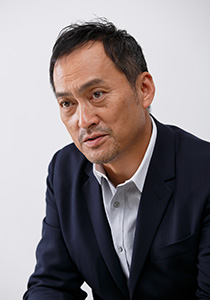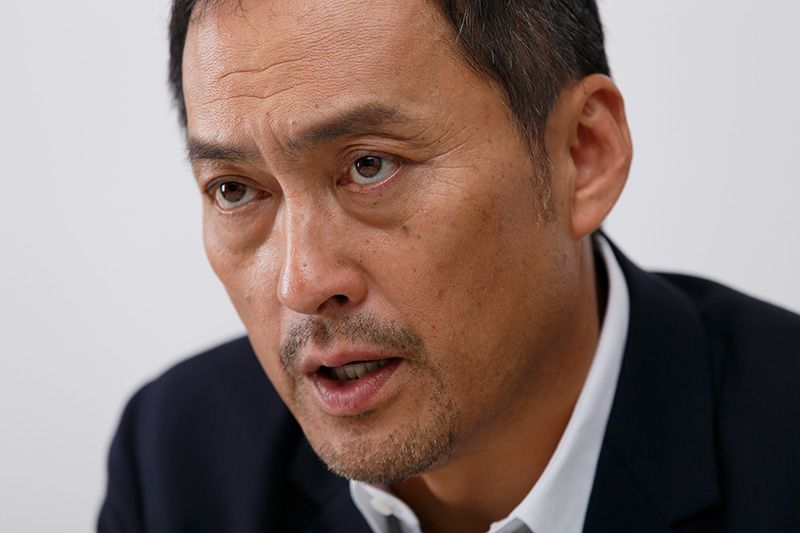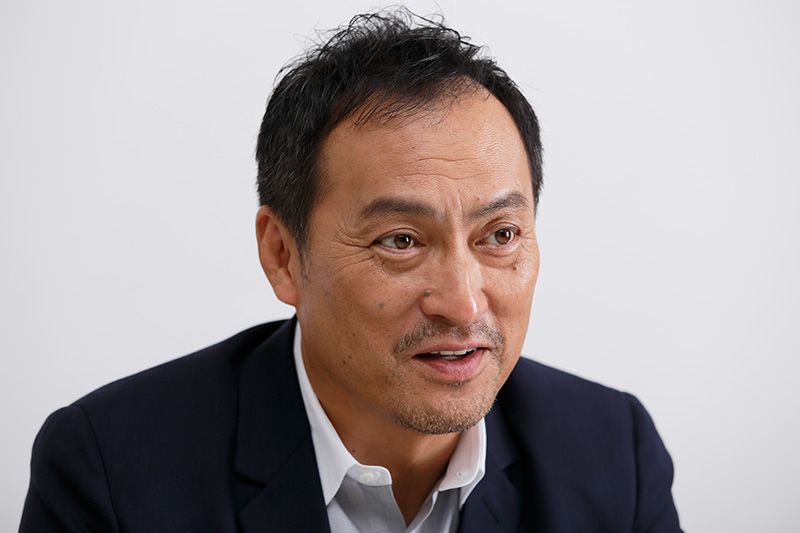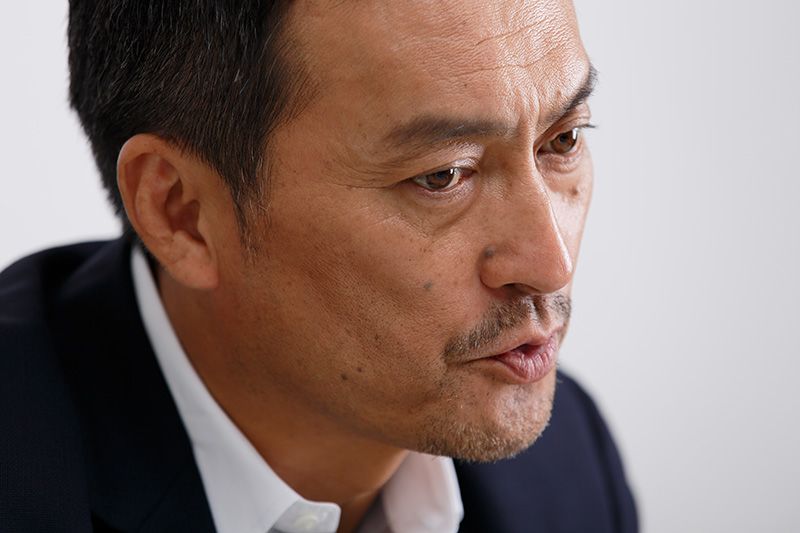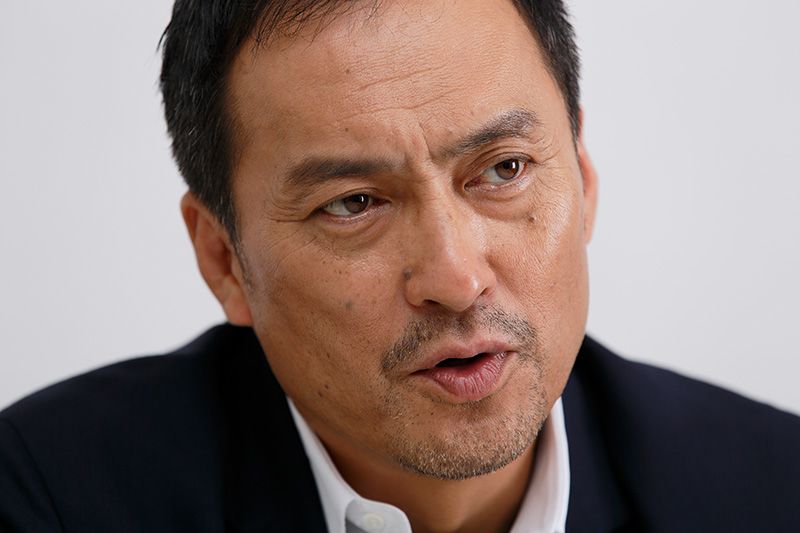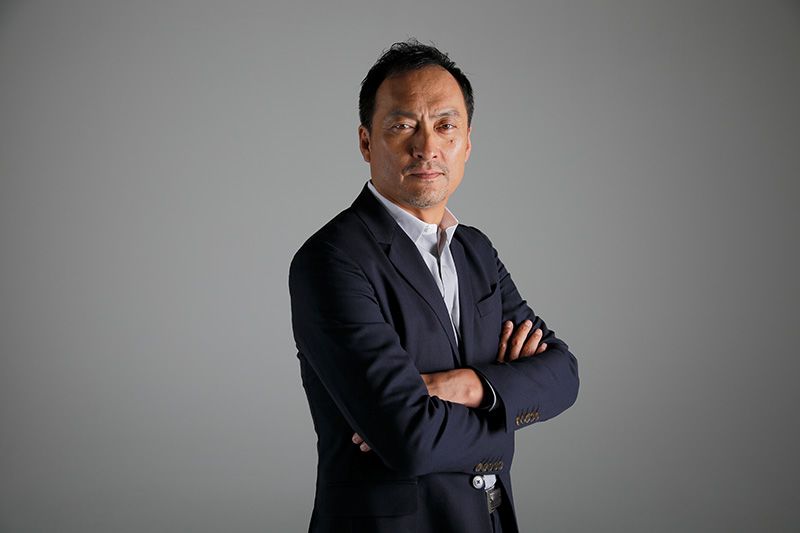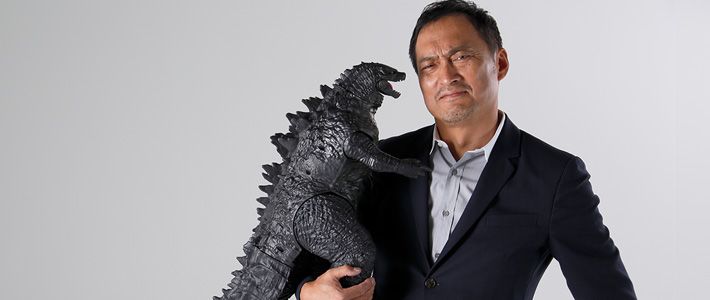
Roar Power: Watanabe Ken Talks Godzilla
Culture- English
- 日本語
- 简体字
- 繁體字
- Français
- Español
- العربية
- Русский
Since its US box-office release in May 2014, the Hollywood film Godzilla, directed by Gareth Edwards, has gone on to be a major hit worldwide. Japan is to become the sixty-third—and final—country to screen the film when it opens there on July 25, and it is likely to be a hit among Japanese moviegoers as well.
Renowned Japanese actor Watanabe Ken plays the role of the scientist Dr. Serizawa Ishirō in the film—a homage to both Honda Ishirō, the director of the original 1954 Gojira (Godzilla), and the scientist character in that film, Dr. Serizawa Daisuke, played by Hirata Akihiko.
Godzilla, the Divine
Watanabe is a member of what might be called the “Godzilla generation,” born as he was in 1959, not long after the debut of the original Godzilla film. The chance to star in the latest film featuring the iconic monster led the actor to ponder what Godzilla is all about.
“In approaching my role as a scientist in the film, I spent some time thinking about the way to view Godzilla, but it’s a bit hard to know what the creature is thinking since it never says a word.”
Watanabe views the monster as a sort of force of nature, as he explains: “Wherever Godzilla goes, a mountain of rubble is left in his wake. We’re not dealing with a creature governed by logic. The first time Godzilla fully appears on the screen the audience hears a roar, setting off an indescribable vibration. It’s not like the sound of a growling dog; more like a wailing sound, something deeply heartrending. And you get the sense of encountering a force beyond human control—something even akin to a natural disaster or some sort of a divine revelation. It’s as if we are being chastised by something.”
“As you know, human society is complex—and it gets more complex all the time, whether it concerns relations between countries or between people. And answers are not easily found. In that context, the vibrations triggered by Godzilla lead people to question their own ways of living—and vibrations, of course, can easily transcend national boundaries.”
When asked to share more of his insights on the appeal of Godzilla, Watanabe touches on the essence of the creature:
“I think it comes down to fear and awe—a bit like the feeling evoked by the wrathful Buddhist deity Fudō Myōō. Godzilla is a creature that seems to embody the view—perhaps distinctive to Asian religions—that an atmosphere of quiet calm and tranquility follows the outbreak of something destructive or fearful.
The Fears that Spawned a Monster
The 1954 Godzilla was very much a product of its time, reflecting the particular fears of that Cold War era. But the themes of the original film still resonate today, as we face surprisingly similar challenges.
“Godzilla was created in the mid-1950s, a time when the scars of the nuclear attacks on Japan were still raw and hydrogen bomb development was progressing rapidly in the context of the Cold War. Its creators envisaged the film as a sort of warning bell. And now today, sixty years later, the menace of radiation is once again an acute reality, following the 2011 nuclear disaster, and we face the same fears. The questions raised by the original film—and evoked by the vibrations Godzilla sets off—are still as stark as ever. It comes down to whether we really can continue down the same path we have been traveling up to now.”
When Watanabe met Gareth Edwards for the first time he was impressed by the respect that the English director, born in 1975, paid to the underlying metaphors of Honda Ishirō’s original 1954 film, and by how well-versed he was in the subsequent 60-year history of Godzilla.
“During my first meeting with Gareth, I was struck by his deep understanding of the history of Hiroshima and Nagasaki as well as the situation in Japan since the massive earthquake and tsunami that struck on March 11, 2011. He also is well aware of the factors that led to the creation of the character Godzilla. Perhaps because he was born in England, which shares a more nuanced view of nuclear weapons, his understanding of the implications of the Godzilla tale is even more acute than that of my character, Dr. Serizawa. For instance, he had the insight to know that a creature like Godzilla could not be destroyed by nuclear weapons. Moreover, in the film, Godzilla and the fearsome creatures known as MUTOs [Massive Unidentified Terrestrial Organisms] are not portrayed as being evil in any way, biologically speaking. Rather, the threat they pose to humanity is much like the danger of a natural disaster. I think that this outlook of the director contributed to the great sense of balance that the movie has.”
The Dilemma for Scientists
The Dr. Serizawa character in the original 1954 film refuses to allow his Oxygen Destroyer technology to be turned into a military weapon, but in the end he intentionally sets off the device in the depths of Tokyo Bay to kill Godzilla, losing his own life, too, as a result. In the latest Godzilla, Watanabe’s character of the same name is faced with a dilemma particular to scientists, as he explains:
“The background of the character I play is complex. His father was an A-bomb victim, so he became committed to efforts to find ways to use nuclear power and radiation to benefit human life. Then he discovers the MUTO creatures and carries out research on them in the hope of using them to eradicate radioactivity. But the MUTOs end up growing into fearsome monsters that threaten to wipe out humanity.”
In a sense, as Watanabe points out, scientists are always confronting similar risks to those faced by Dr. Serizawa when they carry out their research.
“You can see this predicament in the effort to develop drugs to eradicate cancer cells or combat AIDS, for example. There is always a possibility that the drugs or viruses developed in the hope of saving lives could be used for destructive purposes. Scientists are balanced on the knife edge of this dilemma. And the same case can be seen for radiation. None of them worked on nuclear power in order to harm the planet. Yet, if things go wrong, this technology can unleash terrible destruction.”
This is precisely the sort of quandary that Watanabe imagined his character to be grappling with in his own mind. “He comes to the realization that there is a force of nature that exceeds our own power as human beings, and that ultimately we have no choice but to bow down to it. This implies that, ultimately, nuclear technology would have to be abandoned. I have the sense that we now are facing a great turning point—and that is reflected in the nature of my character and in the film as a whole.”
Hope Amid the Rubble
The way Watanabe portrayed Dr. Serizawa in the film was influenced by his experience in the recovery effort following the 2011 Great East Japan Earthquake. He has visited the disaster area several times and continues to be involved in activities to assist the recovery effort.
“A month after the earthquake and tsunami I visited disaster areas and saw towns that had been wiped out, leaving behind almost no trace. In filming the last scene of Godzilla, featuring mountains of rubble, my mind flashed back to what I had seen in Japan three years earlier. But the final scene in the movie doesn’t evoke a feeling of despair. You get the sense, rather, that human beings have the vitality to recover from the disaster and begin to rebuild. In performing that scene I had this feeling of the hope that remained.
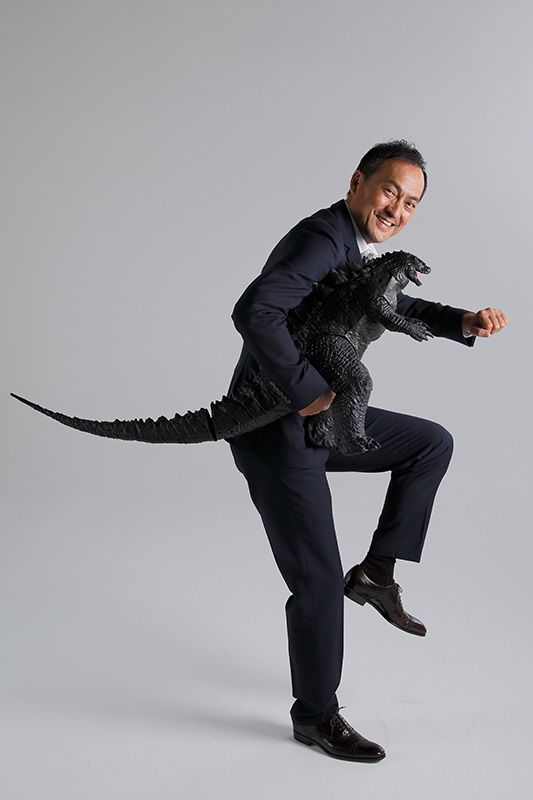 “Some Japanese viewers will probably find it hard to watch scenes of cities being destroyed in the film. But I think the ending, with its hope for recovery, conveys the notion that we all need to take a fresh look at the problems we confront. And I’m happy that the film ends on this note.”
“Some Japanese viewers will probably find it hard to watch scenes of cities being destroyed in the film. But I think the ending, with its hope for recovery, conveys the notion that we all need to take a fresh look at the problems we confront. And I’m happy that the film ends on this note.”
The actor recognizes, at the same time, that the Godzilla films are first and foremost entertainment, not a vehicle for delivering a didactic message to the audience. Gareth Edwards apparently reminded Watanabe that the moviegoers will probably be watching Godzilla with popcorn and a soda. At the same time, the director wanted the audience to be gradually drawn unconsciously into the film’s more serious themes, until at some point they stop reaching for more popcorn.
When Watanabe watched Godzilla movies as a boy he had a similar experience of enjoying the film as entertainment but also picking up, eventually, on the underlying theme.
“At the time I was watching the movies, I didn’t grasp the intentions of the screenwriters. I would simply walk out of the movie theater with a feeling that the applause was still resounding in my heart. But looking back on them a decade or so later, the message of the films began to dawn on me.”
Watanabe notes that audiences for the latest Godzilla film are likely to applaud the roaring monster’s first appearance on screen, despite the fearsome, indescribable vibrations that mark this debut.
“It’s quite similar to the way kabuki aficionados will shout out an appreciative cheer to greet the appearance of a favorite actor or scene on stage,” Watanabe explains. “In that case, too, the vibrations of the performance stir up the audience’s emotions. Our new film does a good job of putting on a great show by incorporating such entertaining elements, including the impressive battle scenes.”
Japanese Films Lack Ambition
Japanese culture may have given birth to the global icon Godzilla, but Japan’s film industry—with the exception of the anime genre—lags behind its overseas counterparts when it comes to the ability to communicate. We asked Watanabe for his thoughts on the current state of the industry.
“As someone involved in the industry, the situation is a bit embarrassing. My impression is that Japanese films have not been willing to confront challenges head-on in the way that Hollywood movies like The Last Samurai or Letters from Iwo Jima have done. Instead, films made in Japan tend to stick to depictions of an innocuous, everyday sort of world. “
“I’d like to act in Japanese films dealing with more universal themes and entanglements between people, as I did in Ashita no kioku [Memories of Tomorrow; 2006] and Shizumanu taiyō [The Unbroken; 2009]. Another good example is last year’s Japanese remake of Clint Eastwood’s 1992 film Unforgiven, titled Yurusarezaru mono in Japanese, which addresses the profound question of where to draw the line between good and evil. Unfortunately, Japanese films do not seem to be inclined in that direction. I’m disappointed that even in the case of the Godzilla tale, whose theme is more relevant than ever to Japan, the Japanese film industry let a golden opportunity pass into the hands of Hollywood.”
The Importance of Being Embarrassed
As an established Hollywood star, Watanabe has become well accustomed to performing roles in English—making him one of the few Japanese stars to do that on the global stage. When we asked him how he went about undertaking that challenge, it inspired him to deliver a short pep-talk to young people in Japan today.
“Acting in English is embarrassing for me. To this day I still feel nervous, not knowing how well I’ll be able to read my lines. It often feels quite awkward. Acting by its very nature is a job that involves such awkward moments. You are often placed in a situation where you have to act out scenes of love or life and death in front of other people. But even though that is the nature of the job, there seems to be a trend where actors want to avoid getting into such embarrassing situations.
“And the problem is not unique to actors. It’s similar to how many young Japanese are reluctant to visit overseas countries or study abroad. I think it is good for young people to encounter all sorts of embarrassing situations. Whether your English is good or bad, getting out of Japan is a way to gain valuable experience through your encounters. Whenever you step out of your comfort zone you’ll always be confronted with hassles and awkward situations.
“There is reluctance these days among Japanese to grapple with the unknown and take on the wider world. And this has resulted in a whole host of problems, including those facing the Japanese film industry today.”
(Original Japanese article based on a June 26, 2014, interview by Harano Jōji, representative director of the Nippon Communications Foundation. Photographs by Yamada Shinji.)
[output_slideshow image_id=e00066]
